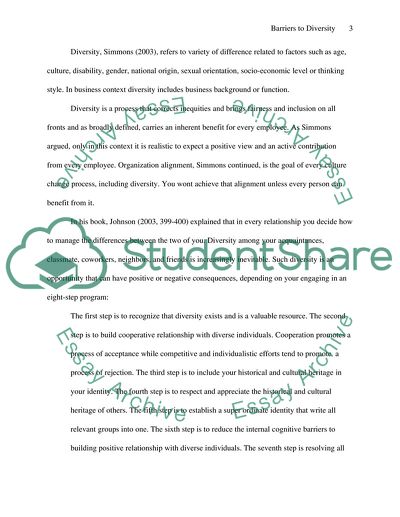Cite this document
(Barriers to Overcome for Diversity to Flourish in an Organization Literature review, n.d.)
Barriers to Overcome for Diversity to Flourish in an Organization Literature review. Retrieved from https://studentshare.org/human-resources/1545152-barriers-that-must-be-overcome-for-diversity-to-flourish-in-an-organization
Barriers to Overcome for Diversity to Flourish in an Organization Literature review. Retrieved from https://studentshare.org/human-resources/1545152-barriers-that-must-be-overcome-for-diversity-to-flourish-in-an-organization
(Barriers to Overcome for Diversity to Flourish in an Organization Literature Review)
Barriers to Overcome for Diversity to Flourish in an Organization Literature Review. https://studentshare.org/human-resources/1545152-barriers-that-must-be-overcome-for-diversity-to-flourish-in-an-organization.
Barriers to Overcome for Diversity to Flourish in an Organization Literature Review. https://studentshare.org/human-resources/1545152-barriers-that-must-be-overcome-for-diversity-to-flourish-in-an-organization.
“Barriers to Overcome for Diversity to Flourish in an Organization Literature Review”. https://studentshare.org/human-resources/1545152-barriers-that-must-be-overcome-for-diversity-to-flourish-in-an-organization.


